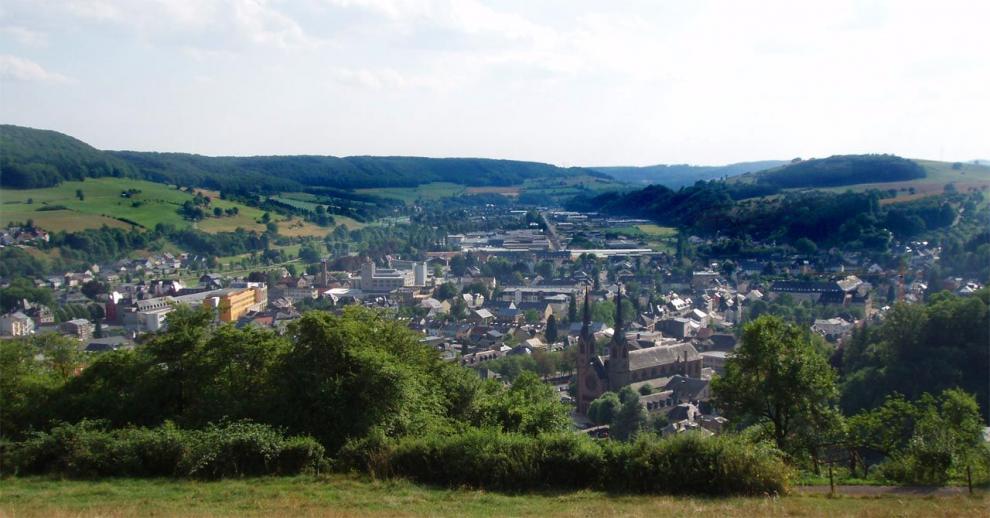Thessaloniki gets ready for its metro launch in November
The underground rapid transit lines have been under construction for almost two decades due to various project delays
 TheMayor.EU logo
TheMayor.EU logo 
The town received its name, according to old sources, when Charlemagne in the late 8th century resettled Saxons, in order to bring them under his control. One of the centre of these settlements was in the area of Diekirch. In order to convert the pagan Saxons to Christianity, a church was built, which gave the settlement its name: Diet-Kirch (people's church).
In the 14th century, Jojn, the blind king of Bohemia, fortified it, surrounding the place with a castellated wall and a ditch supplied by a stream. It remained more or less fortified until the beginning of the 19th century when the French, during their occupation, levelled the old walls and substituted avenues of trees.
In the course of extensive excavation in the 1960s, it was shown that the St. Laurence church is a Roman building. In the early 20th century, wall ruins and mosaics were being found north of the town centre. Archaeological investigations in 1992-1993, 1999 and 2008 enabled the reconstruction of a large Roman villa, which extended over all the land of the medieval town and was abandoned in the early 5th century.
Diekirch was the first town in Luxembourg to have a pedestrian zone, in 1977.
Diekirch is a commune with town status in north-eastern Lucemburg, capital city of the canton Diekirch and the distric of Diekirch. The town is situated on the banks of the Sauer river. As of 2001, the town of Diekirch itself, which lies in the south of the commune, has a population of 6,068 inhabitants.
Diekirch is home to a brewery of national importance carrying the town's name.
Three secondary schools are located in Diekirch: Lycée classique de Diekirch, Lycée technique hôtelier Alexis Heck and Nordstadlycée.

Diekirch is best known for its brewery of the same name and the National Museum of Military History.
National Museum of Military History is dedicated to the Battle of the Bulge of World War II, which took place in Luxembourg in the winter of 1944-1945. There you can find showrooms featuring very extensive collections of weapons, small arms, uniforms, military equipment of all kinds, wheeled and tracked vehicles, in addition to numerous personal soldier’s belongings, photographs, documents and maps. There are also exhibitions of Luxembourg's contribution to various UN peacekeeping efforts and even an exhibit on the Soviet gulag that some Luxembourgish soldiers ended up in after the war. The total number of artifacts on display is in the thousands, and it is easily the largest collection on the Battle of the Bulge in the entire region.
Diekirch can be easily covered on foot. The town center is about 1 km away from the train station, just follow the crowd down the road. The Military Museum is just up the hill from the central church.
As far as sports events are concerned, Diekirch has gained a reputation for its annual cross country running competition, the Eurocross, which attracts world-class runners.
Avenue de la Gare 27, 9233 Diekirch, Luxembourg